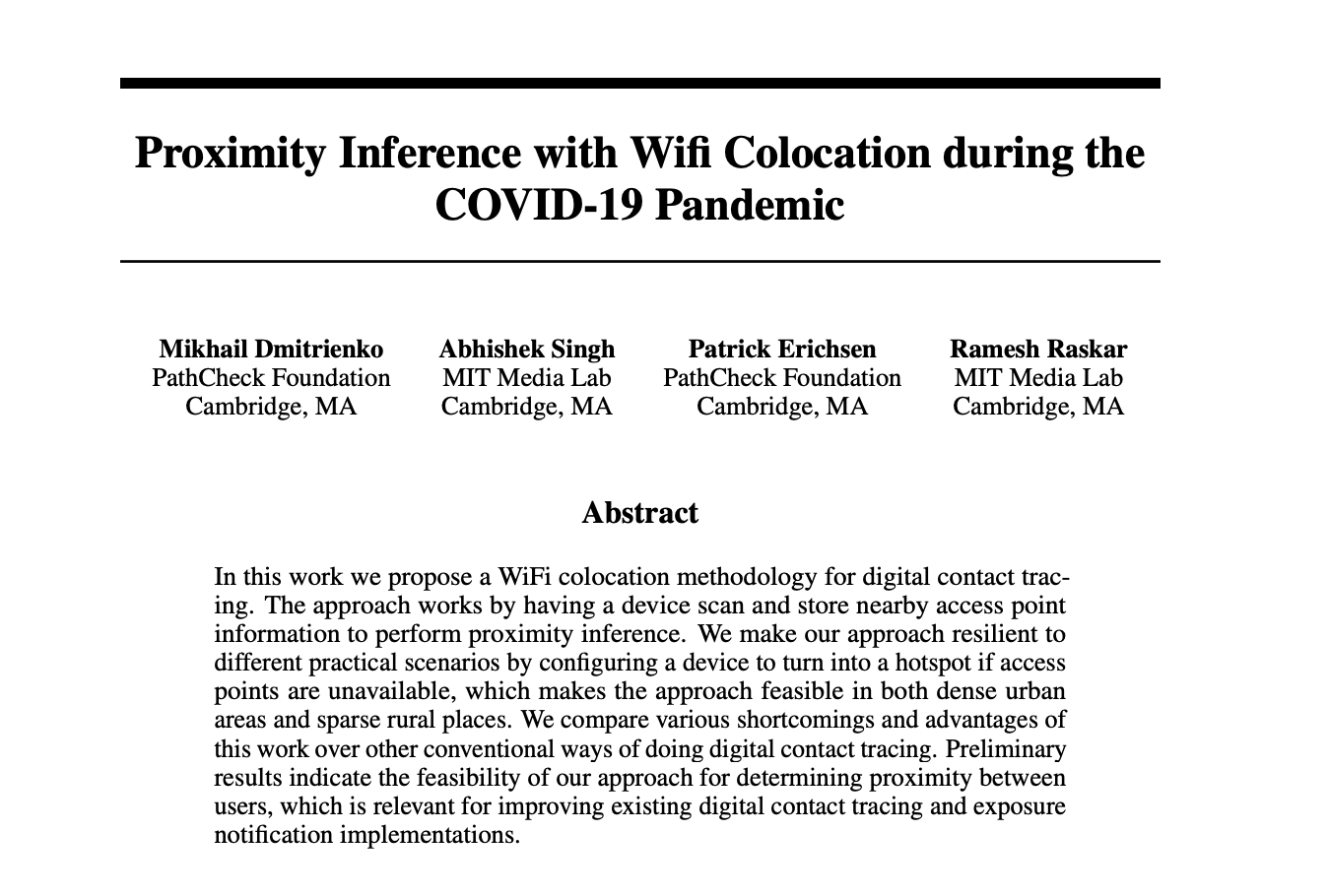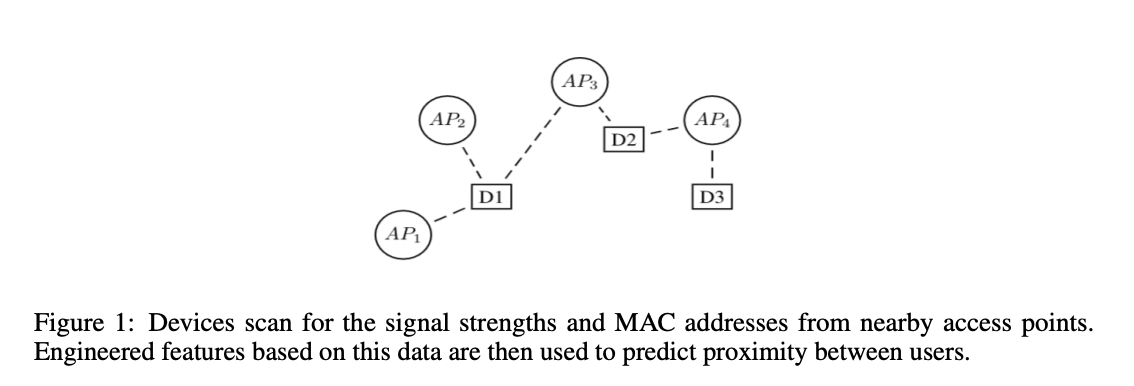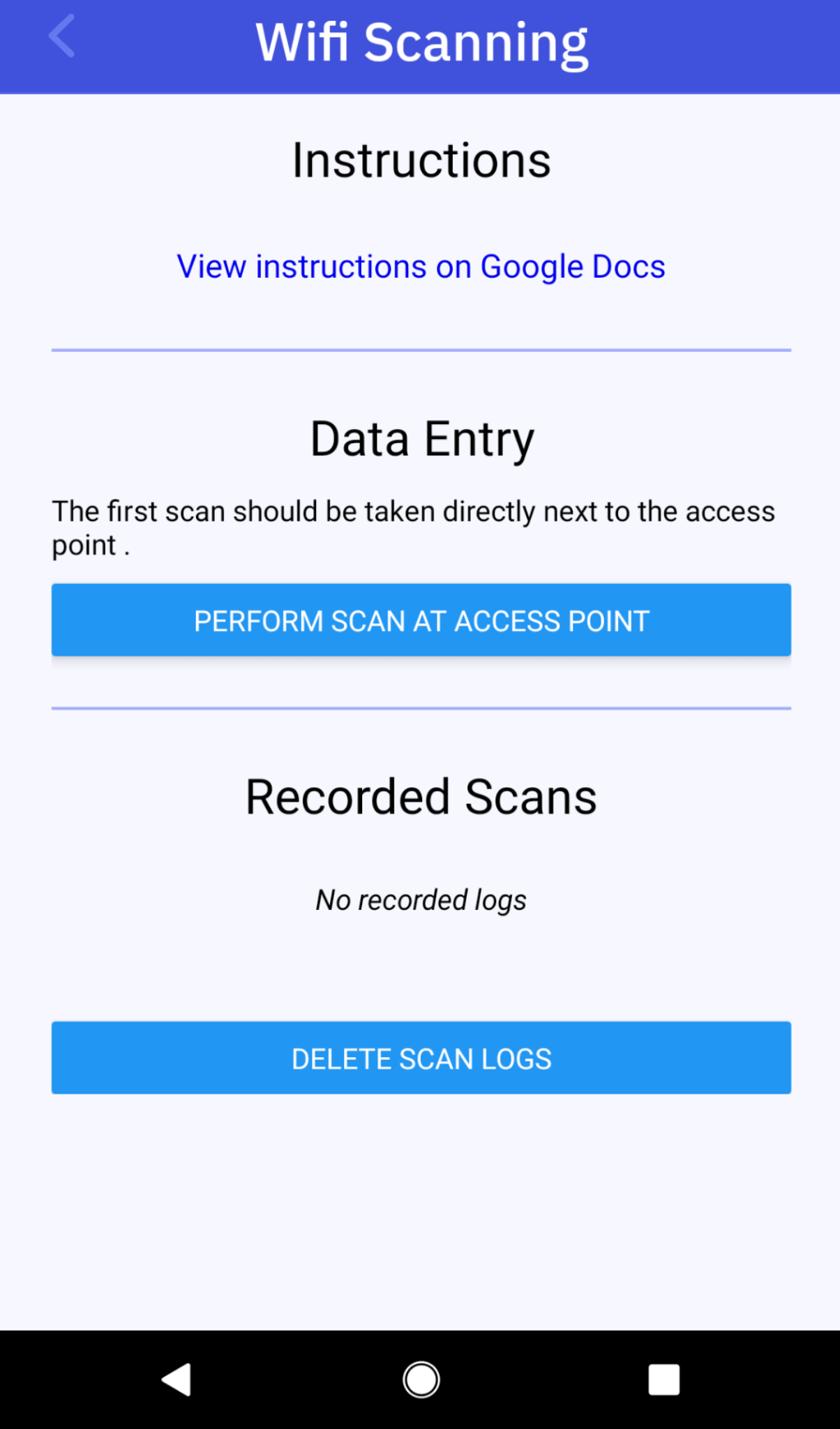
Our work was accepted as a poster presentation at the Dec 2020 NeurIPS Workshop on Machine Learning for Health!
In addition to the development of a flagship mobile app, the PathCheck foundation has a research arm led by members of the Camera Culture group at the MIT Media Lab.
After 4 months of helping to develop features on the mobile app, I joined the Wifi Colocation group to assist in research on novel approaches to digital contact tracing.
Introduction

Privacy-preserving proximity inference is crucial to the success of a digital contact tracing solution. The majority of mainstream solutions use either Bluetooth or GPS based colocation to achieve this. However, a third option that is not as widely discussed is WiFi Colocation.
In this paper, we investigate a hybrid implementation of three WiFi Colocation approaches described in Sapiezynski et. al, Das et al., and Carreras et. al.
The hybrid implementation functions as follows:
- When a user is actively using WiFi, a deterministic if/else classifier infers proximity using features extracted from scans of nearby WiFi access points (APs)
- In the case where a user is not actively using WiFi, a duty-cycle that rotates the device between acting as a WiFi hotspot and a WiFi receiver will allow for proximity inference without interfacing with APs
Process
Researching Prior Art
Following the outbreak of COVID-19, a number of groups have explored ways to leverage WiFi signal processing to help enforce social distancing guidelines and improve digital contact tracing efforts.
Wifi Colocation provides a number of distinct advantages over other approaches such as GPS/Bluetooth based colocation, particularly in terms of user privacy. However, our team identified a handful of limitations to the state of the art when considering the application of Wifi Colocation in a practical context:
- Implementations leveraging hotspot duty cycles will disconnect a user from their current Wifi connection, providing a poor user experience
- The iOS platform limits developer access to many of the APIs required to programatically interact with device hotspots
Hybrid Implementation
The group determined that the two most relevant approaches that could be leveraged in a hybrid implementation were those outlined in Sapiezynski et. al. and Carreras et. al.
Combining the approaches in these two papers provides a number of distinct benefits in a practical context:
- Provides a better user experience by falling back to access point based scanning if a user is connected to a Wifi network, which prevents the user from disconnecting from the network
- Wifi based colocation does not require direction interaction with participating parties, providing greater privacy to the user
Contributions
In addition to helping author the final paper and participating in general discussions around research direction, my primary contributions were as follows.
Proof Of Concept Android Code
Although the Android OS exposes APIs to programatically access the hotspot on a users device, there were no existing React Native bindings for these APIs. The SafePlaces application is written using the React Native framework, so I developed the required bindings to allow our developers to have simpler access to this logic.
Recruiting Volunteers
The SafePlaces Slack community has well over 1,000 members from around the world, involved in the project in a variety of capacities.
I lead efforts to reach out to various members of the community to gather volunteer research participants to collect access point scans from Android devices to train our classification models on.
Developing In-App Data Collection
In order to collect access point scan information from the volunteers, I developed an additional screen that interacted with the React Native hotspot bindings that I authored to record RSSI values at varying distances.

